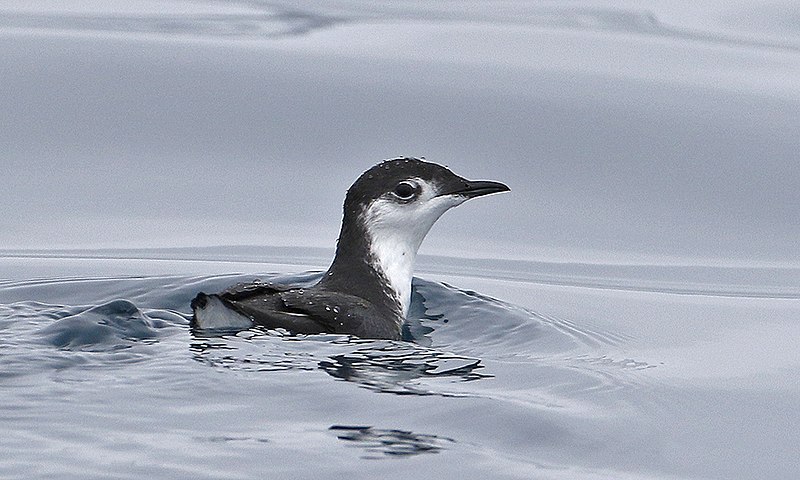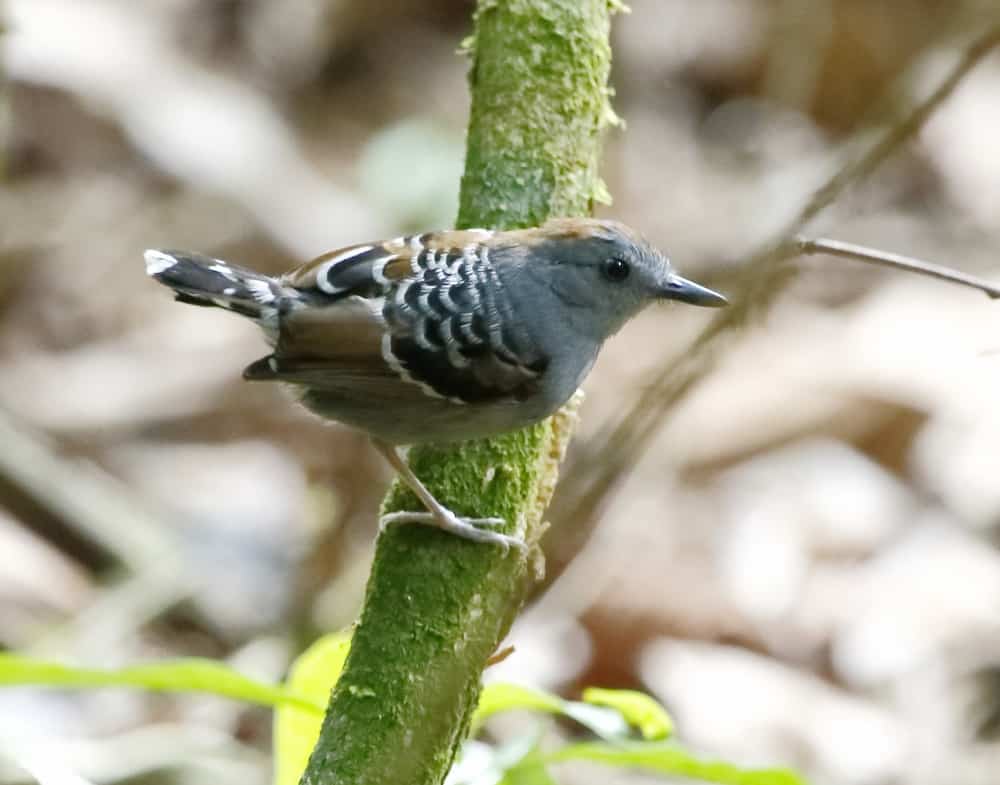Birds are some of the most striking animals in the animal kingdom. Not only is Aves a tremendously species-rich class of animals, but the many species are also incredibly diverse in size, coloration, and general morphology. Birds also have diverse names. This article will investigate 4 species of birds that start with X.
#1 Xinjiang Ground Jay
Description

The Xijiang ground jay is a relatively small bird between 28 and 32 centimeters.
©roberto carlos neves/Shutterstock.com
The Xinjiang ground jay, scientifically known as Podoces biddulphi, is a captivating bird species native to the arid and rugged landscapes of Xinjiang, a region in northwestern China. It has a moderate size, with an average length of about 28 to 32 centimeters. It is a compact yet striking presence in its habitat.
The Xinjiang ground jay’s plumage is an array of earthy tones, with a predominantly sandy-brown coloration on the upperparts and a lighter, creamier underbelly. This subtle blend of hues helps the bird blend seamlessly with the arid terrain it inhabits. This is a remarkable example of natural camouflage. The bird also has blue and black feathers adorning its wings. Both male and female Xinjiang ground jays exhibit similar plumage, showing minimal variation between the sexes.
Distribution
This bird species is endemic to the Xijiang region of China. This means that it only lives in that specific area and nowhere else. The Xijiang ground jay is a “near-threatened” species according to the IUCN and is vulnerable to habitat fragmentation and degradation.
#2 Xantus’ Hummingbird
Description

Xantus’ hummingbird has beautiful feathers and an interesting beak.
©Agami Photo Agency/Shutterstock.com
Xantus’ hummingbird, or Basilinna xantusii, is a mesmerizing avian species that starts with the letter X. This hummingbird, named after the Hungarian ornithologist John Xantus de Vesey, enchants observers with its petite stature and vibrant plumage. With an average length of approximately 9 to 11 centimeters, the Xantus’ hummingbird is among the smaller members of the hummingbird family. Despite its diminutive size, its striking appearance captures the attention of anyone fortunate enough to encounter it.
The plumage of the Xantus’ hummingbird is a true testament to nature’s artistry. The male individuals exhibit an iridescent emerald-green coloration on their upperparts that is vivid when sunlight shines upon their feathers. Their throats have a brilliant splash of iridescent orange-red that resembles a dazzling gemstone. This distinctive coloration on the throat, known as a gorget, serves as a key feature in identifying the species. In contrast, the females possess a more subdued plumage, characterized by shades of pale green and gray, allowing them to blend harmoniously with their surroundings. This exemplifies sexual dimorphism.
Distribution
Xantus’ hummingbird thrives in the enchanting landscapes of the Baja California Peninsula and the neighboring coastal regions of Mexico. These diverse habitats provide the perfect setting for this small hummingbird species. In fact, Xantus’ hummingbird navigates a range of ecosystems ranging from arid desert scrublands to lush coastal vegetation. Their habitats include both natural landscapes and areas influenced by human activities. Its ability to adapt to these varying environments demonstrates the remarkable resilience and adaptability of this species.
#3 Xantus’ Murrelet

Xantus’ Murrelet faces challenges due to oil spills and the introduction of foreign predators to their ecosystems.
©David Pereksta, Pacific Southwest Region US Fish And Wildlife Service, CC BY 2.0, via Wikimedia Commons – License
Description
Xantus’ murrelet (Synthliboramphus hypoleucus) is the next bird that starts with X. It is a beautiful seabird that graces coastal waters around the world. This murrelet measures around 23 to 26 centimeters in length, making it a relatively compact member of the Alcidae family. Its striking plumage adds to its allure, featuring a blackish upper body with intricate white speckling, resembling a constellation of stars against the night sky. The contrasting white plumage on its underparts and face lends it an elegant and distinctive appearance.
When it comes to sexual dimorphism, Xantus’ murrelet presents a subtle contrast between the sexes. Males and females share a similar basic plumage pattern, with both displaying the characteristic black and white coloring. However, during the breeding season, the male murrelets often exhibit a more conspicuous white patch behind their eyes, a feature not as prominent in females. This differentiation in the breeding plumage serves as a helpful visual cue for identifying the sex during the reproductive period.
Distribution
Xantus’ murrelet lives on coastlines throughout the northern Pacific Ocean in the California Current System. This species lives primarily in coastal areas and typically breeds on small islands off the coasts of California and Baja California, Mexico. Xantus’ murrelet, or the Guadalupe murrelet, is an endangered species.
#4 Xingu Scale-backed Antbird

The English name “Xingu scale-backed antbird” is a reference to the Xingu River.
©Hector Bottai, CC BY-SA 4.0, via Wikimedia Commons – License
Description
The Xingu scale-backed antbird (Willisornis vidua) is a lovely bird species native to the Amazon rainforests of Brazil. This antbird species has a unique blend of characteristics that set it apart within its ecosystem. With a size of approximately 13 to 14 centimeters in length, the Xingu scale-backed antbird is small amidst the lush vegetation of the forest. Its coloration is an exquisite blend of rich browns and deep blacks. Furthermore, the upperparts of its body have distinctive, intricate scale-like patterns that give the species its name. Its underparts are characterized by a warm, rufous color. This species does not exhibit sexual dimorphism.
Distribution
This species of antbird is a common species in the southeastern Amazon in Brazil. The IUCN classifies it as “least concern” which indicates the Xingu scale-backed antbird is not currently vulnerable to extinction.
The photo featured at the top of this post is © Agami Photo Agency/Shutterstock.com
Thank you for reading! Have some feedback for us? Contact the AZ Animals editorial team.






